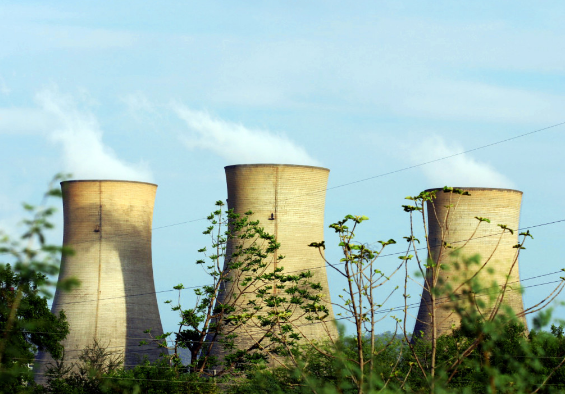
The 2016 Nuclear Threat Initiative (NTI) Security Index was released this week. A media frenzy and heated debates in many countries followed the report’s release in both 2012 and 2014. The same appears to be true this year, particularly in South Asia, where debates over nuclear security remain contentious. Despite India’s improved performance, the report is not likely to be received well in New Delhi.
Prepared biennially by the NTI and the Economist Intelligence Unit (EIU), the index rankings are released before the global Nuclear Security Summit (NSS). The report reviews the security of nuclear materials the world-over, and highlights the existing gaps and pertinent problems.This year’s report has a new addition to the index, the sabotage ranking, which reviews the nuclear security environment in 45 countries based on potential sabotage risks.
Since 2012, scholars in India have criticized the NTI methodology, pointed out the lacunae, and defended the Indian position (some more persuasively than others). Despite the inclusion of credible international experts in the scoring process, analysts have been critical of the process, and have also expressed problems with the “control and leadership exercised on the project by known non-proliferation activists.”
India fared better this year, with a two-point increase in its score. This change is the result of India’s involvement in bilateral assistance activities with the United States, and its ratification of the International Atomic Energy Agency (IAEA) Additional Protocol. On the surface, India’s relatively better performance may seem worth rejoicing. However, if one digs deeper, there is not much to be happy or critical about. It is predictable that observers in India would not find anything exceptional in the 2016 edition, especially given the dominant skepticism regarding the biennial reports and its scoring style.
India’s performance is reflected in the following info-graphics:

Source: NTI Index 2016 Country Profiles-India
The criticism of the previous two reports revolved around some valid issues, such as the lack of safety-security synergy, the contentious yardstick of judging a nuclear program based on the number of sites, and an unwillingness to take into account additional radiological materials. These critiques remain relevant even today. Experts argue that quantitative assessments do not present a comprehensive picture about a country’s nuclear security landscape.
A specific problem with the NTI 2016 report relates to the view that increased quantities of weapons-usable nuclear material automatically implies increased insecurity. According to the report, one of the reasons for India’s low score is its increasing quantities of materials. Other countries put in the category of increased stockpiles include Japan, the Netherlands, North Korea, Pakistan, and the United Kingdom.
It is imprudent to assume that just because some countries have increased their nuclear stockpiles, the security risks increase. NTI’s assessment should focus on the security of that material as opposed to the quantity. A country may have a limited amount of weapons-grade nuclear material, but if it is not secured properly, even that limited amount is extremely dangerous. This case is different for a country such as India that has a fairly large share of nuclear material, but takes significant steps to secure it satisfactorily. Hence, nuclear security is dependent upon more than the amount of material held by a particular country, something NTI’s assessment fails to acknowledge.
In addition to the above issue, another controversy that surrounds the NTI report needs to be highlighted. Even if the intention of the involved organizations is genuine, and solely directed at highlighting the state of security and identifying shortcomings, the point gets lost in the ensuing discussions. In India, a general perspective persists that the NTI Security Index is an “anti-India Western non-proliferation document.”
Unfortunately, the rankings and media commentaries surrounding the NTI report tend to make countries increasingly defensive about their nuclear security. Even though it hopes to generate a healthy debate on the issue, it pushes some countries to question the ultimate benefit of such monitoring initiatives. This is especially undesirable given that the report is released before the NSS, which hopes to foster a healthy environment of cooperation and discussion among the participants.
To be fair, it is important for India to establish an independent regulatory agency (as also highlighted by the IAEA besides the NTI report). India has been working towards this, albeit slowly. In 2011, India tabled the Nuclear Safety Regulatory Authority (NSRA) Bill, which aimed to establish an autonomous regulatory agency as a replacement of the current Atomic Energy Regulatory Board (AERB). Despite the introduction, the bill was not taken up before the 15th Lok Sabha’s dissolution. Additionally, the NSRA Bill 2015,which was supposed to be introduced during the Parliament’s winter session, remained locked in the governmental chambers. While India must be credited for its intentions, the polity must concentrate their efforts towards achieving this goal without letting the issue hibernate for long.
Overall, it would be beneficial if India was more open, not just for its domestic audiences but also international ones, about steps it takes in ensuring nuclear security. On the other hand, organizations such as the NTI would do well to engage more extensively with Indian think tanks that focus on these issues and conduct relevant studies. This would help panelists understand the idiosyncrasies of Indian nuclear security and better judge the country’s efforts, thus enabling them to offer more valuable recommendations. Undoubtedly, nuclear security is a global concern and can only be dealt with if all stakeholders work in tandem with one another.
***
Image: Fatima, Flickr


